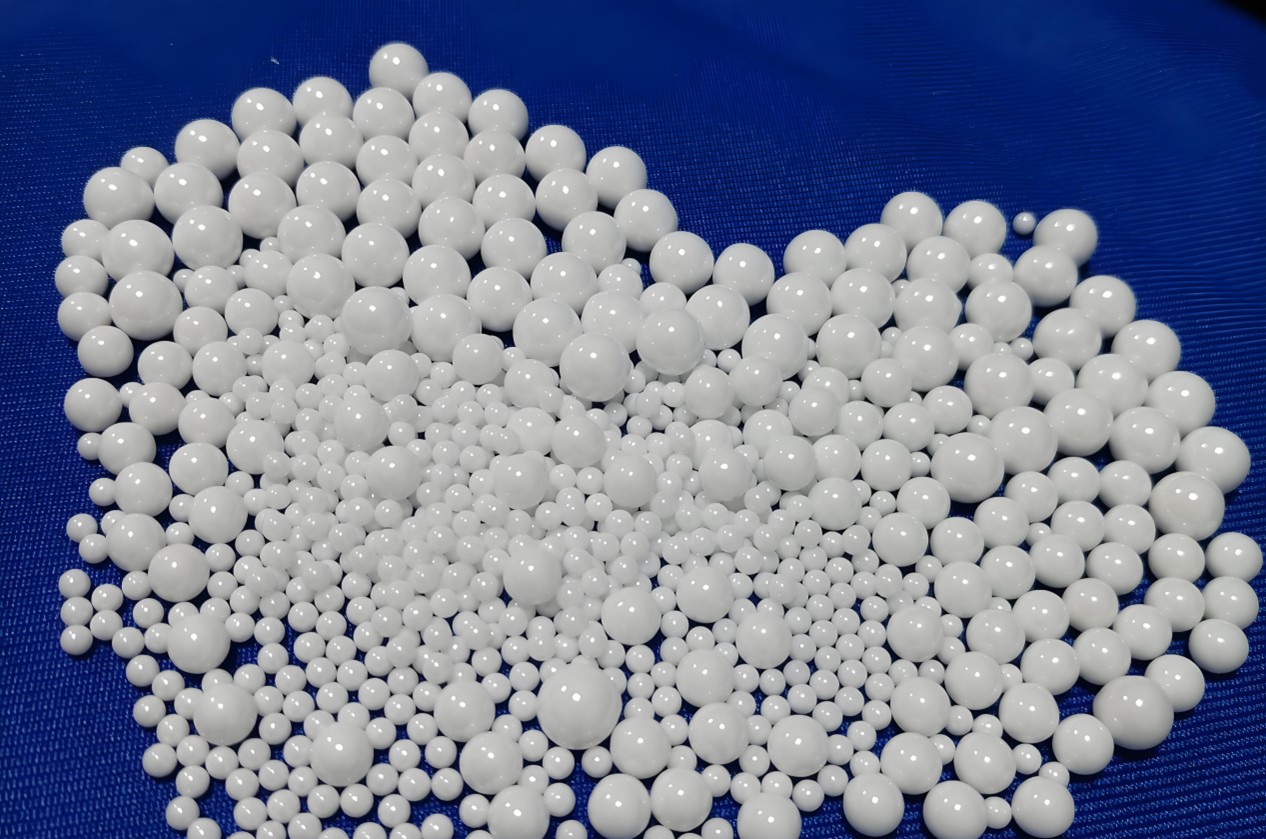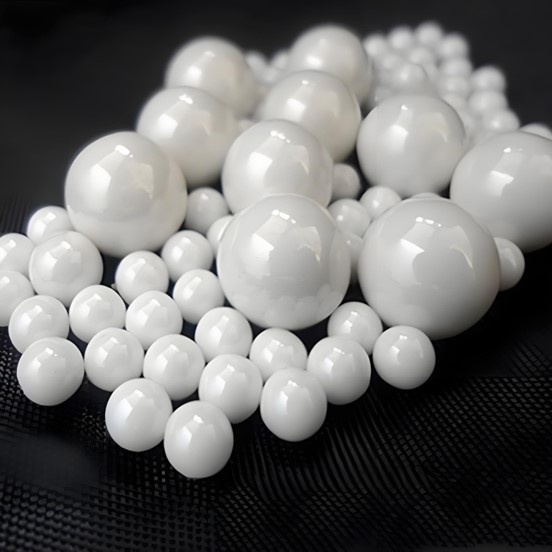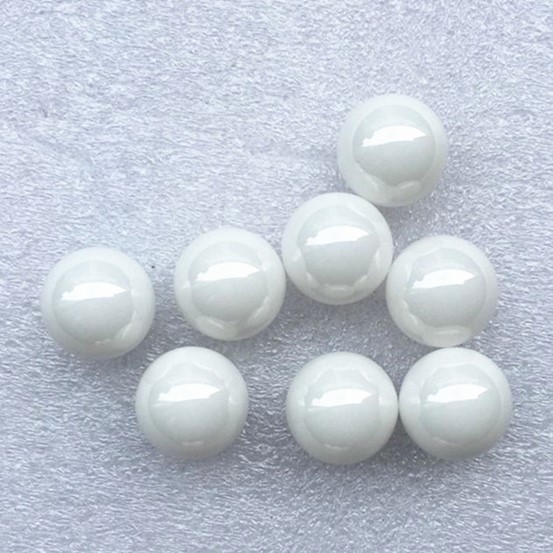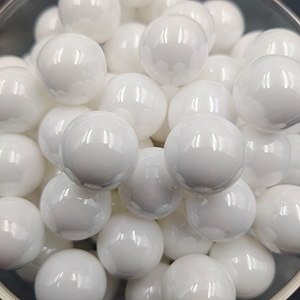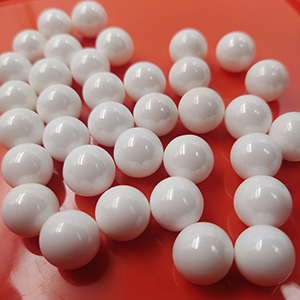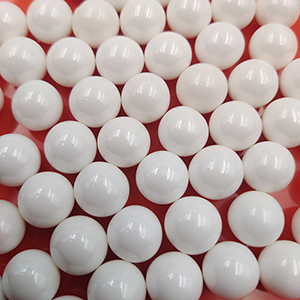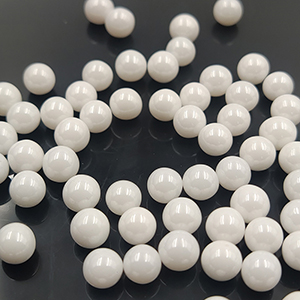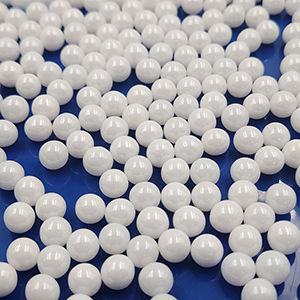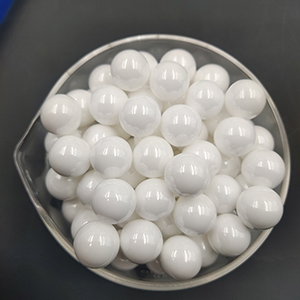Production Process of Wear-resistant Zirconia Ceramic Balls
Production process of wear-resistant Zirconia Ceramic Balls
In the modern industrial field, wear-resistant zirconia ceramic balls have become key materials for grinding, polishing and other processes due to their excellent wear resistance, chemical stability and high strength. Its production process covers multiple precise links, and each step plays a decisive role in the final performance of the product.
Raw material selection and pretreatment
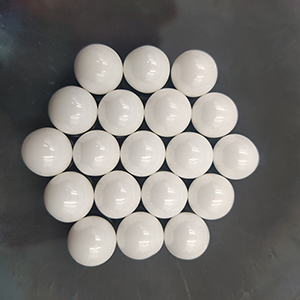
Raw material selection
The performance of zirconia ceramic balls is closely related to the quality of raw materials, with zirconia powder being the main raw material. At present, common zirconia powders include yttrium-stabilized zirconia and cerium-stabilized zirconia, among which yttrium-stabilized zirconia is the most widely used because it can maintain a tedral phase structure at room temperature and has good toughness and wear resistance. When choosing raw materials, attention should be paid to their purity. Generally, the zirconia content should not be less than 99.5%, and the lower the impurity content (such as iron, sodium, etc.), the better, to avoid impurities affecting the performance and appearance of ceramic balls during the subsequent sintering process. Meanwhile, the particle size distribution of the powder is also of vital importance. Generally, the average particle size is between 0.5 and 2 microns. The narrower the particle size distribution, the more conducive it is to preparing ceramic balls with uniform performance.
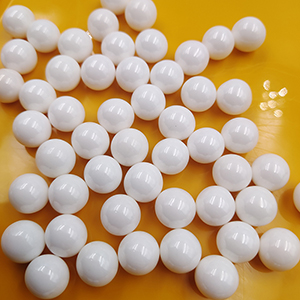
Raw material pretreatment
To ensure the uniform mixing of raw materials and improve the quality of molding and sintering, the zirconia powder needs to be pre-treated. The first step is dispersion treatment. Due to the strong agglomeration property of zirconia powder, it will affect the subsequent process. Therefore, physical or chemical methods should be adopted for dispersion. Physical dispersion is commonly achieved through high-speed stirring, ultrasonic dispersion and other methods, which break the agglomeration of powder by mechanical force. Chemical dispersion involves adding dispersants, such as ammonium polyacrylate, etc. These dispersants are adsorbed on the surface of the powder and prevent the powder from re-agglomerating through electrostatic repulsion and steric hindrance. The dispersed raw materials need to undergo drying treatment to remove moisture and prevent moisture from causing defects in the green body during the molding process. The drying temperature is generally controlled at 80-120 ℃, and the drying time is determined by the amount of raw materials.
Forming process
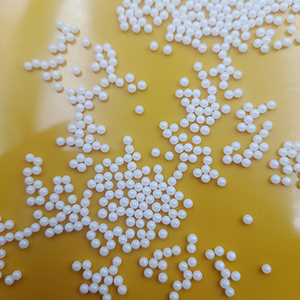
Isostatic pressing forming
Isostatic pressing is one of the common methods for producing wear-resistant zirconia ceramic balls. The pre-treated raw materials are loaded into elastic molds (usually rubber molds), placed in high-pressure containers, and injected with liquid media (such as water or oil). Under high pressure (generally 100-300 mpa), the liquid medium uniformly transmits pressure in all directions, subjecting the raw materials inside the mold to the same pressure in all directions, thereby achieving compaction and shaping. The advantage of isostatic pressing is that it can prepare ceramic ball green bodies with uniform density and dense internal structure, which is suitable for preparing large-sized and high-Precision Ceramic Balls. However, the production efficiency of this method is relatively low and the mold cost is relatively high.
Injection molding
Injection molding has the characteristics of high production efficiency and suitability for mass production. The pre-treated raw materials are mixed with binders (such as paraffin, polyvinyl alcohol, etc.) in a certain proportion to produce injection materials with good fluidity. Under the action of the injection machine, the injection material is injected into the mold cavity through the injection nozzle. After cooling and solidification, the mold is demolded to obtain the ceramic spherical green body. Injection molding can precisely control the shape and size of ceramic balls, enabling the production of ceramic balls with complex shapes. However, the addition of the binder will increase the degreasing process of the green body, and problems such as deformation and cracking of the green body are prone to occur during the degreasing process. Therefore, the degreasing process parameters need to be strictly controlled.
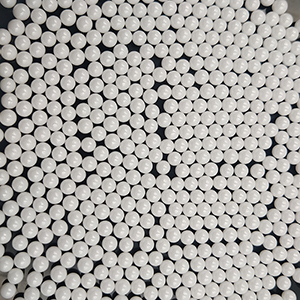
Rolling forming
Rolling forming is a simple and efficient forming method, which is suitable for preparing ceramic balls of medium and small sizes. Put the raw material powder into the rotating drum and spray the binder solution at the same time. Under the rotation of the drum, the powder gradually agglomerates into balls. As the rolling process proceeds, the surface of the ball is constantly wetted and wrapped by the binder, gradually becoming smooth and dense. The equipment for rolling forming is simple and the cost is relatively low, but the dimensional accuracy of the formed ceramic balls is relatively low. It is suitable for fields such as grinding where dimensional accuracy requirements are not high.
Sintering process
Degreasing
Whether it is isostatic pressing, injection molding or rolling molding, the blank contains binders that need to be removed through the degreasing process. The degreasing process is usually carried out at a relatively low temperature (generally between 300 and 600℃), allowing the binder to gradually decompose and volatilize. The degreasing rate needs to be strictly controlled. If it is too fast, it will cause the internal gas of the green body to be discharged rapidly, resulting in defects such as pores and cracks. If it is too slow, it will prolong the production cycle. To ensure the degreasing effect, a segmented heating method can be adopted. For instance, the temperature can be slowly raised at a relatively low level first to allow the binder to decompose slowly, and then the temperature can be gradually increased to completely remove the remaining binder.
High-temperature sintering
The degreased green body needs to undergo high-temperature sintering to enhance its density and strength. The sintering temperature of zirconia ceramic balls is generally between 1400 and 1600℃, and the specific temperature depends on the stable type of zirconia and the characteristics of the raw materials. During the sintering process, material diffusion and grain growth occur between the particles within the green body, gradually densifying the green body. The sintering process is usually carried out in high-temperature furnaces (such as vacuum furnaces, atmosphere furnaces, etc.), and different sintering atmospheres (such as air, nitrogen, hydrogen, etc.) can affect the performance of ceramic balls. For instance, sintering in a reducing atmosphere can reduce the oxidation of certain impurities in ceramic balls, thereby enhancing their purity and performance. After sintering is completed, the ceramic balls need to be cooled slowly to avoid thermal stress caused by sudden temperature changes, which may lead to cracking of the ceramic balls.
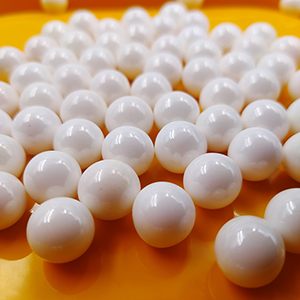
Post-treatment process
Grinding and polishing
The surface of the sintered ceramic balls may have problems such as unevenness and insufficient dimensional accuracy, and they need to be ground and polished. Grinding is generally carried out using a grinding machine. Ceramic balls are mixed with grinding media (such as alumina grinding balls, silicon carbide grinding powder, etc.) and grinding fluids (such as water, grinding agents, etc.). Under the action of the grinding machine, the excess parts on the surface of the ceramic balls are removed through the mutual friction between the grinding media and the ceramic balls, so that their dimensions meet the requirements. After grinding, polishing is carried out. Polishing can be done by either chemical polishing or mechanical polishing. Chemical polishing is a process that uses chemical reagents to corrode the surface of ceramic balls, making them smooth. Mechanical polishing is a process that uses tools such as polishing wheels and polishing paste to finely grind the surface of ceramic balls, further enhancing their surface finish and precision.
Quality inspection
Quality inspection is an important part of the production process of wear-resistant zirconia ceramic balls. The main inspection items include hardness, density, wear resistance, dimensional accuracy and appearance quality, etc. Hardness testing can be carried out using equipment such as Rockwell hardness testers and Vickers hardness testers to measure the surface hardness of ceramic balls. Density testing involves measuring the mass and volume of ceramic balls, calculating their density, and determining whether they meet the standards. Wear resistance testing is generally carried out using a wear testing machine to simulate the wear conditions of ceramic balls in actual use and evaluate their wear resistance performance. Dimensional accuracy detection uses measuring tools such as calipers and micrometers to measure dimensional parameters such as the diameter and roundness of ceramic balls. The appearance quality inspection is carried out through visual or optical inspection equipment to check whether there are defects such as cracks, pores and spots on the surface of the ceramic balls. Only ceramic balls that meet all the test indicators can be released as qualified products.
The production process of wear-resistant zirconia ceramic balls is a complex and precise one. From raw material selection to finished product output, every link needs to be strictly controlled to produce ceramic balls with excellent performance and reliable quality, meeting the application requirements of different industrial fields.

